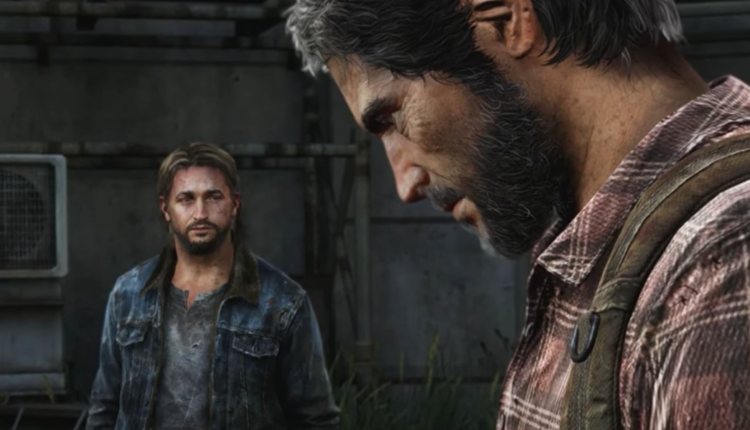After some weeks of perilous voyaging, Joel finally reunites with Tommy in The Last of Us Episode 6. It’s a slower episode than those of previous weeks. No guns are fired. No clickers or bloaters attack. The episode instead underscores the developing bond between Joel and Ellie—the pair facing their largest test of loyalty in these moments when they are least in danger.
The Joel/Ellie test was also an important beat in the 2013 video game, which features the Tommy reunion during roughly the same narrative moment—about six hours into a ten-hour gameplay. (The series has been so faithful that its narrative pacing is nearly identical.)
There are, however, some differences in the set up.
While the series sends Joel in Tommy’s direction from the very beginning, Joel taking on the Ellie mission in order to secure a car battery to reach Tommy, the game complicates the brotherly love. Joel only quests after Tommy once Tess dies; his character motivation was never to reunite with his brother, the two having long butted heads. (The series change was likely meant to soften Joel’s character; in the game, Joel escorts Ellie only to get his hands on weapons.)
The reunion, too, is a bit different.
In the game, Joel and Ellie find Tommy at a hydroelectric plant, which his group is using to power their settlement. (We never actually visit the settlement in the game, although we do see it from a hill in a cutscene.) Gameplay mechanics require action, and so as soon as Joel finds Tommy, the plant comes under attack by another group. Joel kills a bunch of people. Tommy kills a bunch of people. It’s fun with the whole family.
(You can watch the video game’s Tommy reunion here, beginning at 6:34:04.)
After the shootout, Ellie, realizing that Joel is trying to hand her off to Tommy, takes a horse and flees, requiring Joel and Tommy to go after her—and kill more people along the way. It’s after this chase and in an abandoned house where Joel and Ellie have the aggressive heart-to-heart which occurs in the televised version’s settlement. The environment may be different, but the character beat is still the same: Joel feels he is unable to continue being Ellie’s guardian, while Ellie pleads with Joel not to abandon her—like so many have done before.
In the series, the reasons for Joel’s hesitations are more clearly visualized. His struggle is expressed physically throughout the first several episodes: he’s winded climbing stairs; he’s unable to fight off an attacker in Kansas City; and his age is brought up consistently in dialogue. After reuniting with his younger brother, Joel explains that he’s just not fit enough to protect Ellie, a fear stemming from his inability to save his daughter, Sarah.
In the game, these physical struggles are never really highlighted, although Joel articulates the same fear of not being able to take Ellie the rest of the way to the Fireflies.
The result is the same in both: Joel realizes that he must finish the mission, and he leaves Tommy behind.
The series, however, lingers on this moment longer—taking a full hour to underscore these character decisions—allowing Joel to be more vulnerable and expressive. The result is maybe the strongest episode thus far and the best example of how writers Neil Druckmann and Craig Mazin have been able to improve an already rich and emotionally complex storyline.
Also: by letting the actors do the work.
Pedro, you had us in tears.
Assistant Editor
Joshua St Clair is an Assistant Editor at Men’s Health Magazine.



Comments are closed.